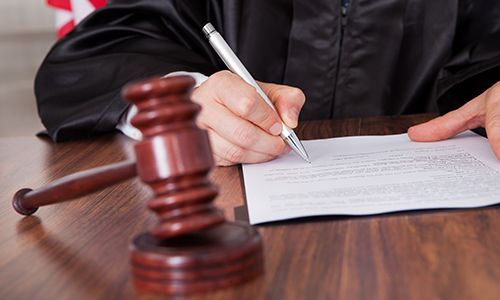Understanding Summary Judgment in the United States—and How to Improve It
Law Week Colorado recently highlighted IAALS’ new report on the landscape of summary judgment motions practice, Efficiency in Motion: Summary Judgment in the U.S. District Courts. The report is intended to serve as a foundation for conversations about current practices and eventual improvements, and recognizes that motions practice—as much as discovery—has a role to play in civil justice reform. Brittany Kauffman, who leads IAALS’ work in this area, said:
“We really heard a call from those attorneys and judges we’ve worked with to also look at dispositive motions practice. They are feeling that it is equally contributing to the cost and delay in our system and that process can be more efficient as well.”
 The report reviewed 10 federal district courts for the effects of summary judgment motions; it found significant differences across the district courts in terms of filing rate, grant rate, and time to ruling. Kauffman suggested that this trend was the result of the individual judges and the districts’ approach to motions practice.
The report reviewed 10 federal district courts for the effects of summary judgment motions; it found significant differences across the district courts in terms of filing rate, grant rate, and time to ruling. Kauffman suggested that this trend was the result of the individual judges and the districts’ approach to motions practice.
“Some embrace efficient motions process and ruling process before them and have an expedited approach,” she said. “The variation across the districts highlights the different approaches to summary judgment across the country, and we can learn to inspire other districts to be more efficient.”
Judges hold part of the key to increasing case efficiency when summary judgment motions are involved. “When judges take an active role in their docket and their cases and have cold pre-motion filing conferences in order to have a dialog . . . it’s extremely productive, it helps the court with its resources, it helps the parties with their resources and time,” said Peter Koclanes, a partner at Sherman & Howard. “It’s so much more efficient than the parties filing motions and going through the briefing.”
At IAALS, the major takeaway is that there is much room for improvement. According to Kauffman:
“The variation across case types and districts highlight there are approaches out there that make the process more efficient. We can learn from research to look at those examples and make recommendations for best practices and make the practice across the country more efficient and effective.”
Heather Buchanan is a third-year law student at the University of Colorado Law School and contributes to IAALS Online. Please direct inquiries about this post to iaals@du.edu.



